Although within the scope of my sightseeing around the archaeological site I got back to the central pyramid in Chichén Itzá, El Castillo, again I decided not to deal with it now and instead headed first in the direction of the Sacred Cenote (Cenote Sagrado).
Along the way I passed by yet another interesting structure. This was the Venus Platform (Plataforma de Venus), which is often accompanied by the adjective “great” because there is another Venus platform at the site and this one is somewhat bigger, plus it is located in the spacious square near El Castillo.
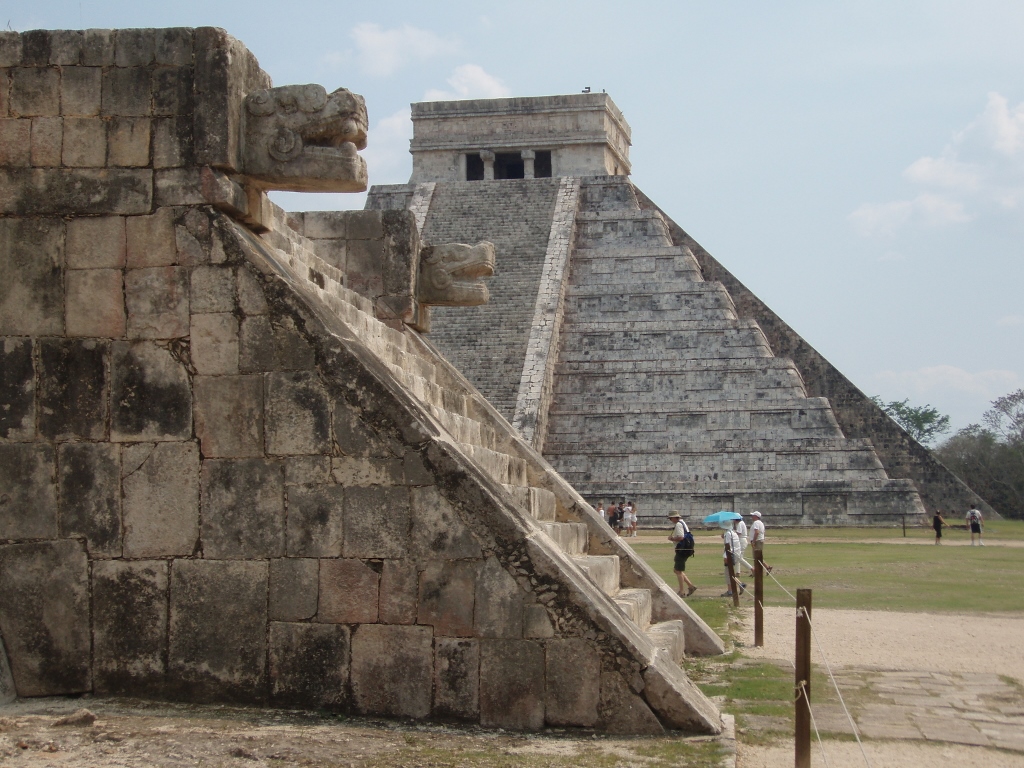 Stairway of the Venus Platform and El Castillo in the background
Stairway of the Venus Platform and El Castillo in the background
This is a platform with a square ground plan and a stairway on each of the four sides that are guarded at the top by feathered serpent, i.e., the depictions of god Kukulkan, as may be seen in the photo above. On the opposite side of the platform in relation to the side seen in the photo, on the ground, close to the stairway, there is a statue of Chacmool that can logically be assumed to belong to this platform since it is exhibited within the space fenced off by a rope (but I don’t have a photo showing this). I have already mentioned before that this specific statue of Chacmool used to be used for the placement of a bowl with offerings to gods.
As far as the name of this platform is concerned, on the basis of some elements of the stone decoration it has been established that the platform was dedicated to the planet Venus. The ancient Maya followed the movement of Venus very attentively since it helped them with the annual planning of the agricultural activities and different rituals. After all, the planet Venus is very specific in terms that it can easily be seen with the naked eye and for this reason it is “the most popular,” so much so that it has its very familiar nicknames – the Morning Star and the Evening Star. Namely, it appears in the sky as the brightest of stars, although it is clearly not a star, and since it is located close to the Sun it may be observed particularly well when the sunlight is somewhat weaker, i.e., in the transitory periods of the day – early in the morning and early in the evening, which consequently renders its alternate names.
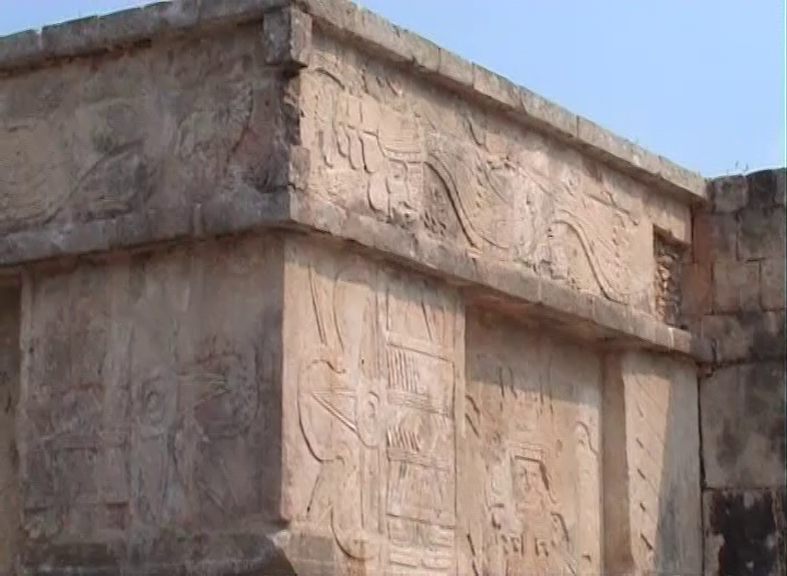 Some of this symbolises Venus, but I don’t know what
Some of this symbolises Venus, but I don’t know what
In the general direction faced by the north side of the pyramid of El Castillo and the Venus Platform, there is a broad path called the sacbe, the name for a Maya road, that has been leading since the times of the ancient Maya towards the Sacred Cenote (Cenote Sagrado) – a large natural well with freshwater.
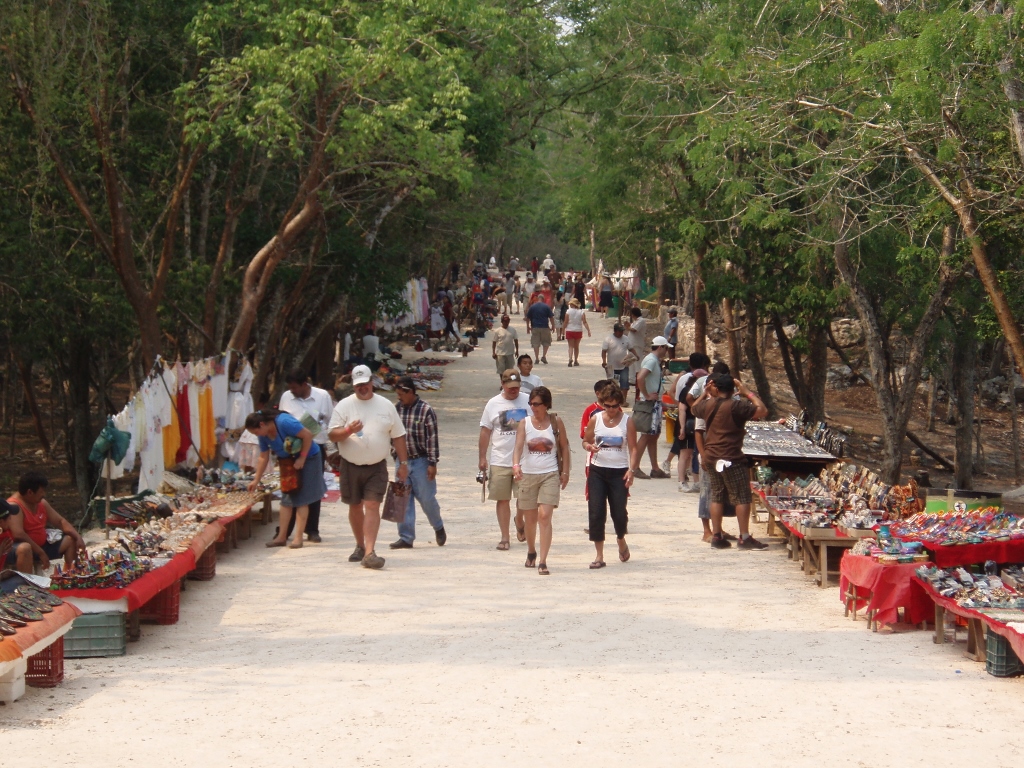 Path leading to the Sacred Cenote within Chichén Itzá
Path leading to the Sacred Cenote within Chichén Itzá
A cenote is the name given to natural “wells” with freshwater that predominantly exist on the Yucatán Peninsula, specifically in the north part of the peninsula. Namely, the entire peninsula is made of karst and for that reason there are no rivers here. There are ponds and lagoons, but the water is not safe to drink. On the other hand, over time in some spots there has been the collapse of the bedrock and these points provide a direct access to the groundwater.
Since I’m mentioning geology and the Yucatán peninsula, the ruling hypothesis (the Alvarez hypothesis) in the world of science is that some 65.5 million years ago when the dinosaurs ruled a meteorite struck the Earth creating havoc – it is believed that over 50% of life on the Earth died out on that occasion. After all, I have already written about this in my stories on the travel around Denmark (see: https://www.svudapodji.com/en/denmark-2/).
The point of impact of this meteorite is precisely by the Yucatán Peninsula, on the northwest side of the peninsula, and although there are cenotes in other parts of Yucatán, it may be seen in the northwest that they follow the line of the crater created at the point of the meteorite’s impact, which is again linked to some geological specificities, but this is far too technical for me and not very important for my story.
What is important, apart from this side-note type of explanation, is that the ancient Maya used the water from the cenotes for drinking. But, those cenotes were also used from time to time to drop in some offerings to gods in the shape of human sacrifice. Here again I have to voice out my suspicion of the wisdom and development of the Maya civilisation. So, maybe and probably they were great astronomers, but to use the water in which human corpses disintegrate, with all the natural exposure of the water to the elements, dust, flora and fauna debris, etc., even with this being a part of a large system of groundwater, does not sound like a good and healthy thing.
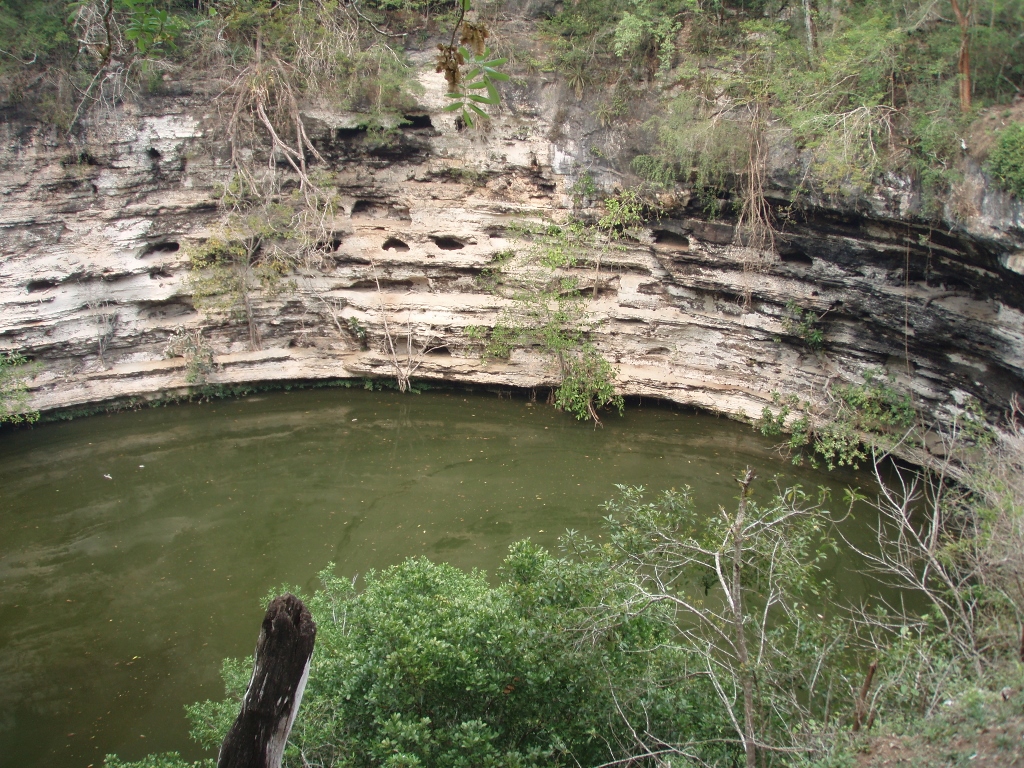 Sacred Cenote
Sacred Cenote
Be as it may, the ancient Maya believed that the Sacred Cenote was the home of the rain god, Chaac, and consequently they regularly threw in humans as ritual sacrifice. In the past it was thought that only virgins were thrown in, however, as it turned out, when researchers dived here, skeletons of both men and women, as well as children were found. This means that the Maya used to thrown in whatever was at hand and whatever seemed desirable for god Chaac at the given moment.
On the top of the cenote, near the access path, there is also a built structure with relief decorations and so I believe that this was a good platform for throwing people into the well, i.e., into the Sacred Cenote. The point is that, in addition to being a source of potable water, the cenotes were also considered sacred places, as well as channels for the communication with gods.
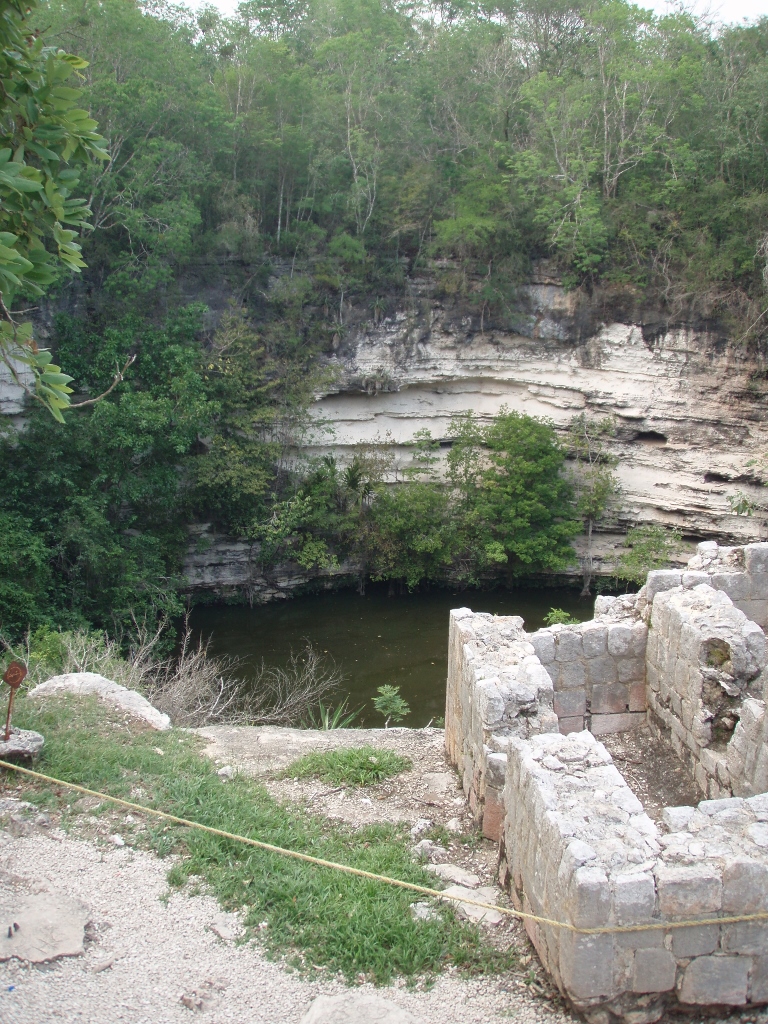 Sacred Cenote with a part of a Mayan structure to the right
Sacred Cenote with a part of a Mayan structure to the right
After a short stay by the Sacred Cenote, following the same path, the sacbe, I returned to the main clearing with El Castillo in the centre, but again I continued with my sightseeing of the surrounding structures. One of the first I came across was the Platform of Jaguars and Eagles (Plataforma de Águilas y Jaguares).
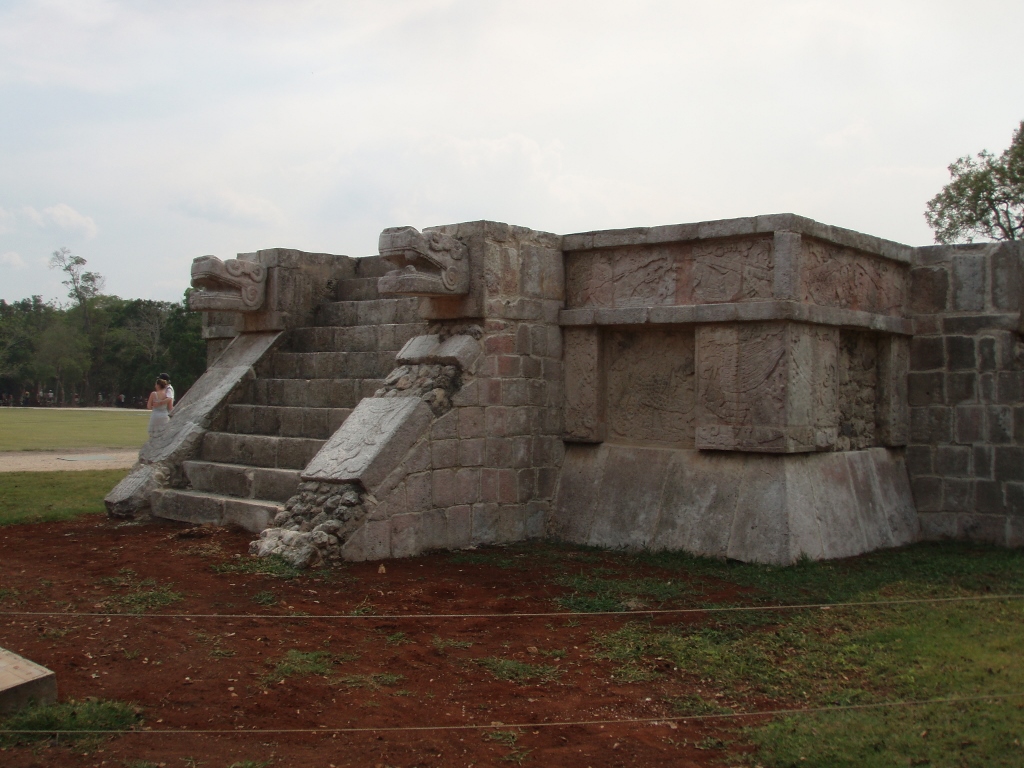 Platform of Jaguars and Eagles
Platform of Jaguars and Eagles
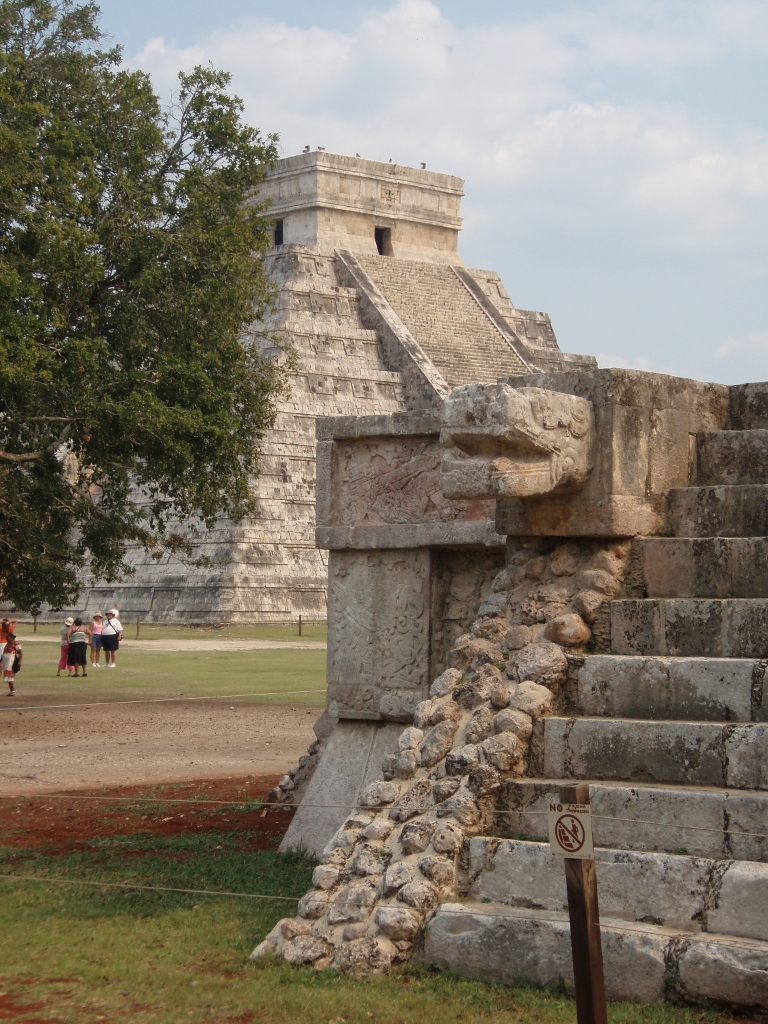 Part of the Platform of Jaguars and Eagles with El Castillo in the background
Part of the Platform of Jaguars and Eagles with El Castillo in the background
This platform practically has the same concept of the ground plan as the Venus Platform, although it is somewhat smaller, but it is decorated quite differently which may be concluded from its name. Specifically, the stone panels that adorn it show the depictions of jaguars and eagles eating human hearts.
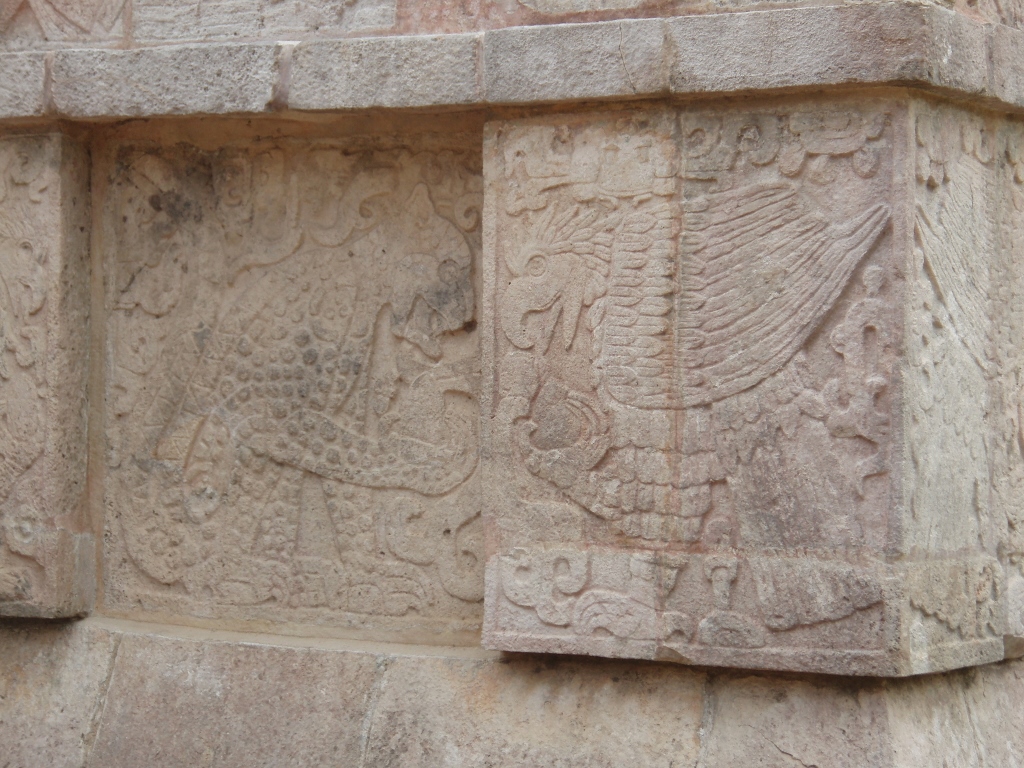 Stone decoration on the Platform of Jaguars and Eagles
Stone decoration on the Platform of Jaguars and Eagles
Right next to this platform, there is another, bigger one with a very different ground plan – an extended rectangle which in the middle of a longer side has an almost square addition on which there is a stairway leading to the top. This platform is not high either, but what is characteristic of it is that it is decorated with sneering human skulls. This is the reason why it is called the Tzompantli or the Skull Platform (Tzompantli/Plataforma de los Cráneos), because “tzompantli” is the name for some wooden racks used by the Mesoamerican civilisations in order to exhibit on them the human skulls originating either from war prisoners or from sacrificed individuals. Namely, it is presumed that the platform used to be linked with the sacrificing of humans.
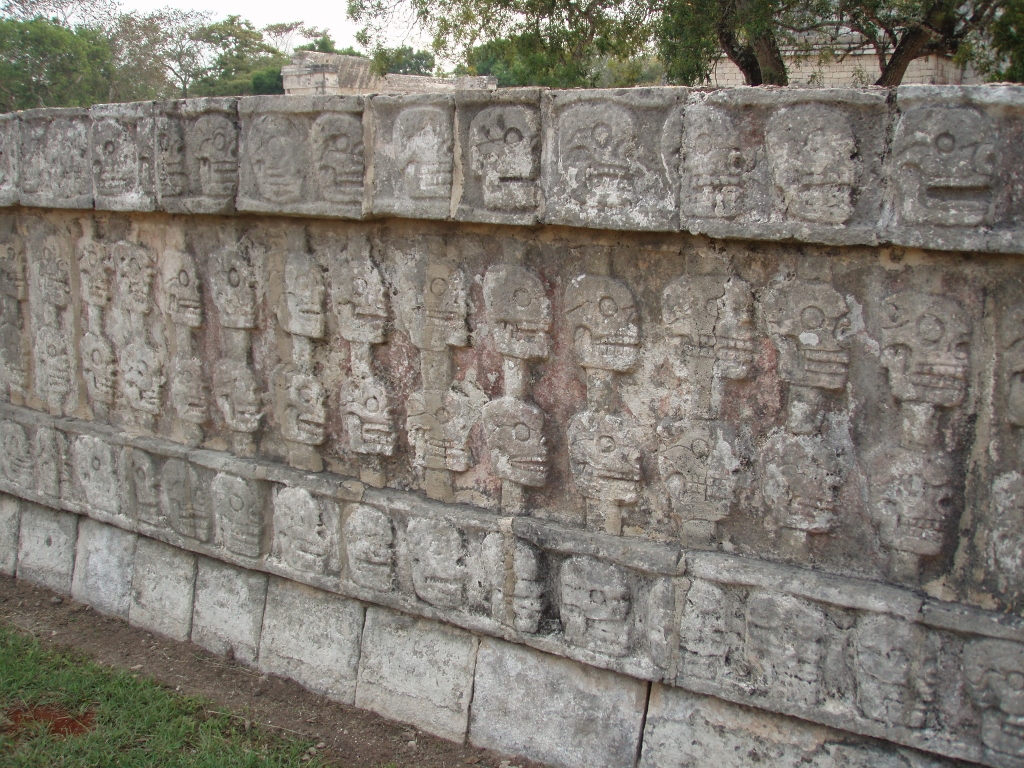 Stone decoration on the Tzompantli platform
Stone decoration on the Tzompantli platform
These depictions of human skulls decorate the perimeter of the rectangular part of the platform, while the square addition has a different type of decoration. The top of the stairway is adorned and safeguarded by the heads of Kukulkan, a Mayan deity in the shape of a feathered serpent, the long body of which covered in feathers is clearly shown in the upper segment of the stone reliefs in this part of the platform.
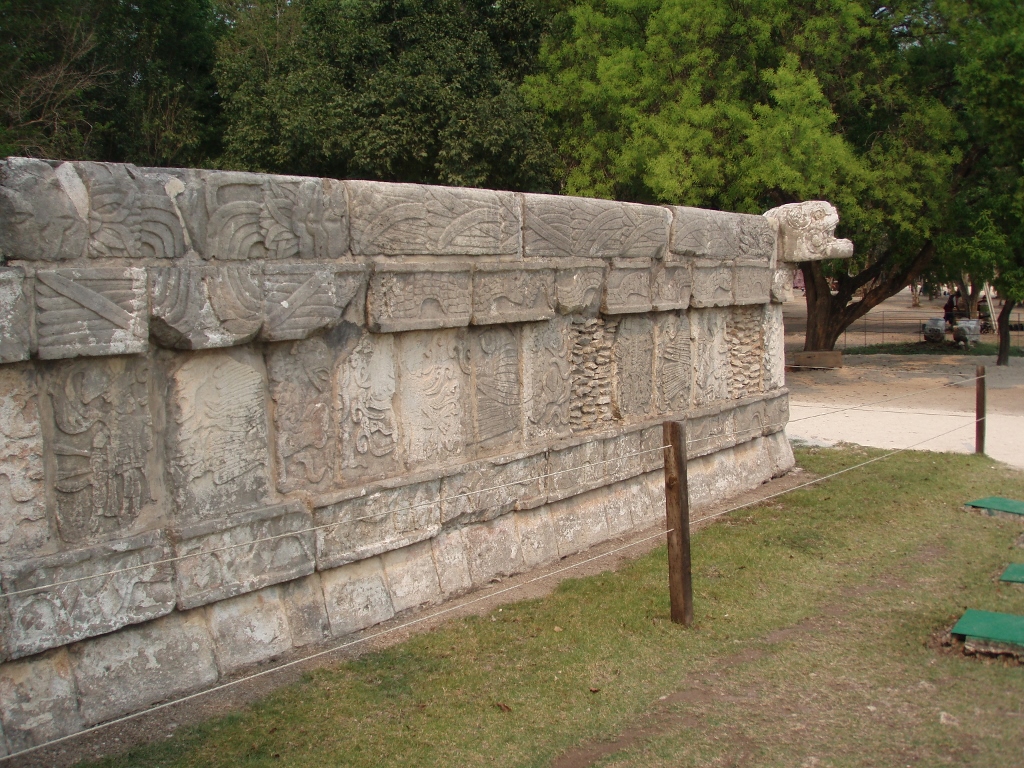 Stone decoration on the Tzompantli platform
Stone decoration on the Tzompantli platform
While strolling, I made a whole circle around the Tzompantli the back side of which is fully covered in the depictions of human skulls. A little farther away I could also see parts of El Castillo, the main pyramid in Chichén Itzá.
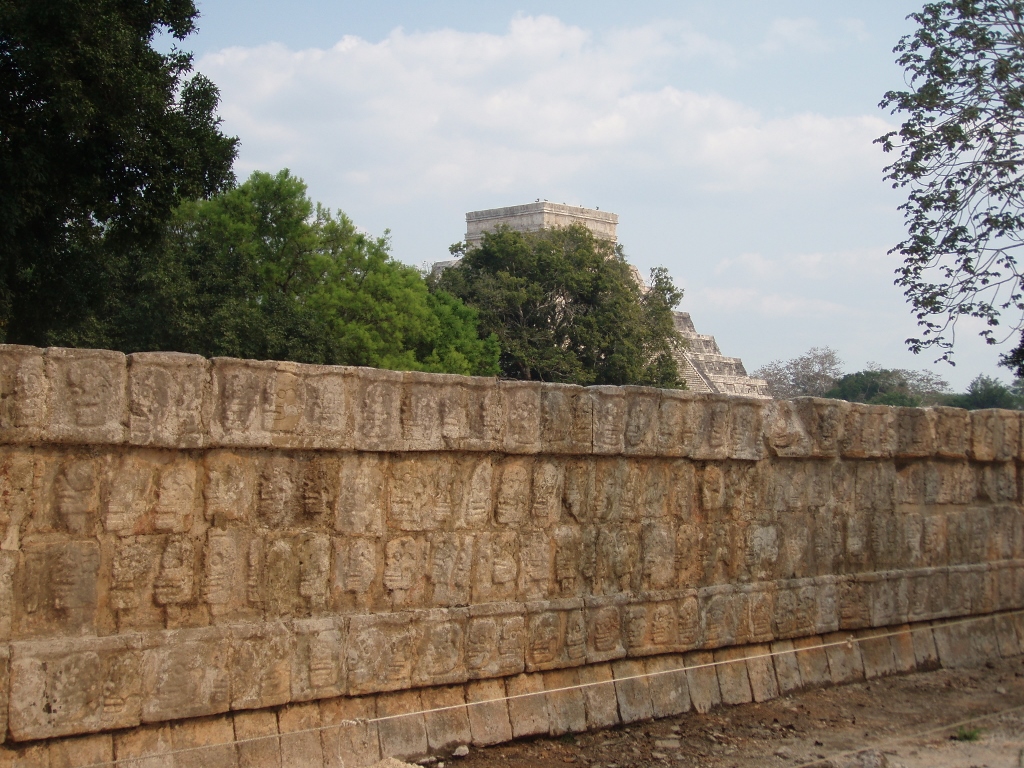 Back section of the Tzompantli platform
Back section of the Tzompantli platform
And then I got to the Great Ballcourt (Juego de Pelota). The traditional ball game from the region of Central America had nothing to do with sports, but rather it was a ritual activity. Although a version of this game is still played in some parts of Central America, the point is that when it comes to the traditional version practically the rules are almost completely unknown.
It is known that the players had to throw the ball through a hole in a stone disk placed high in the middle of the walls that bound the field (two parallel walls). This was not that simple since the players were not allowed to touch the ball made of the natural rubber with their hands or feet, but rather with elbows, shoulders and hips.
However, what is still not known are the consequences of this “game” and there are different opinions among the researchers. Some believe that the defeated team and some that it was precisely the winning team that was sacrificed in the end. Be as it may, the point is that the game was organised solely for religious, ceremonial purposes, it had nothing to do with sports and ultimately somebody had to be sacrificed. On top of this, the whole thing could be “enjoyed” only by the rulers, the noblemen and the priests.
As I was approaching the court, already on its exterior side I could see the feathered serpent Kukulkan positioned in such a way that it ascended the slope of the support wall, ending with the head on the top, but the depiction of this Mayan deity also adorns the interior section of the ballcourt itself. In the following photo it is possible to discern the stone goal in the middle and towards the top of the long wall.
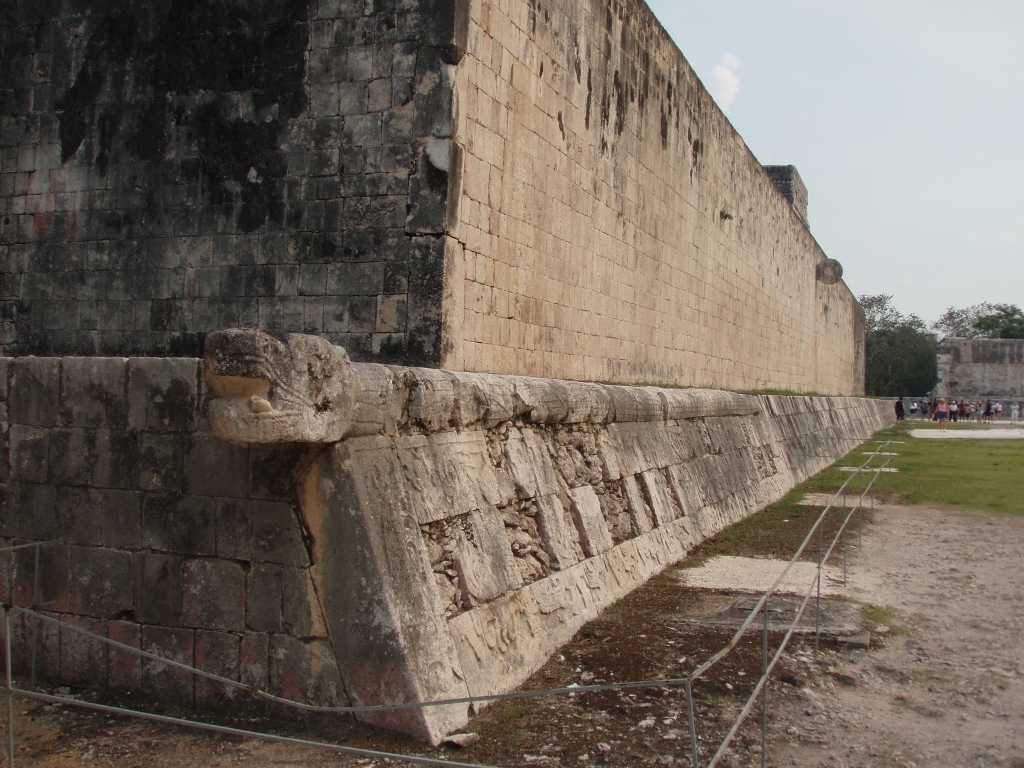 Ballcourt
Ballcourt
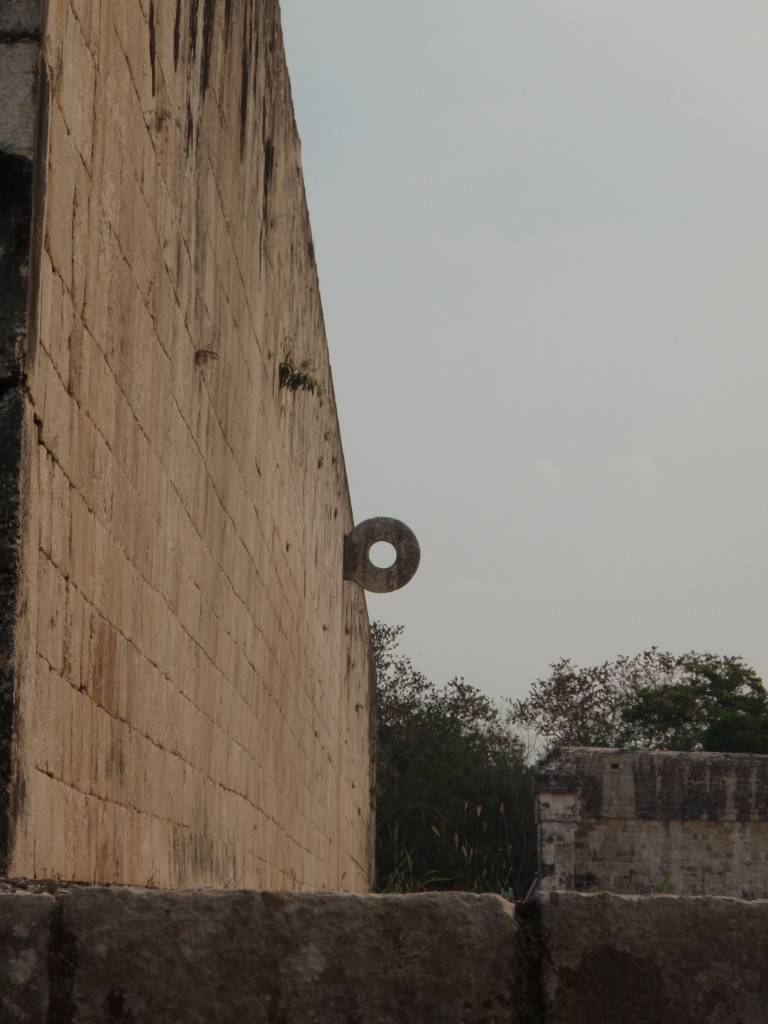 Ballcourt, a detail with the stone goal
Ballcourt, a detail with the stone goal
By the way, the ballcourt in Chichén Itzá is the biggest and the best preserved such court in Central America. The length of the court is 168 metres, while its width is 70 metres. Its ground plan has the shape of a printed capital letter I. In other words, the longer central section is edged by high stone walls with the stone goals, while at the ends there are transverse areas. This central, main section for the game is 95 metres long, while the parallel walls with the stone goals are 8 metres high.
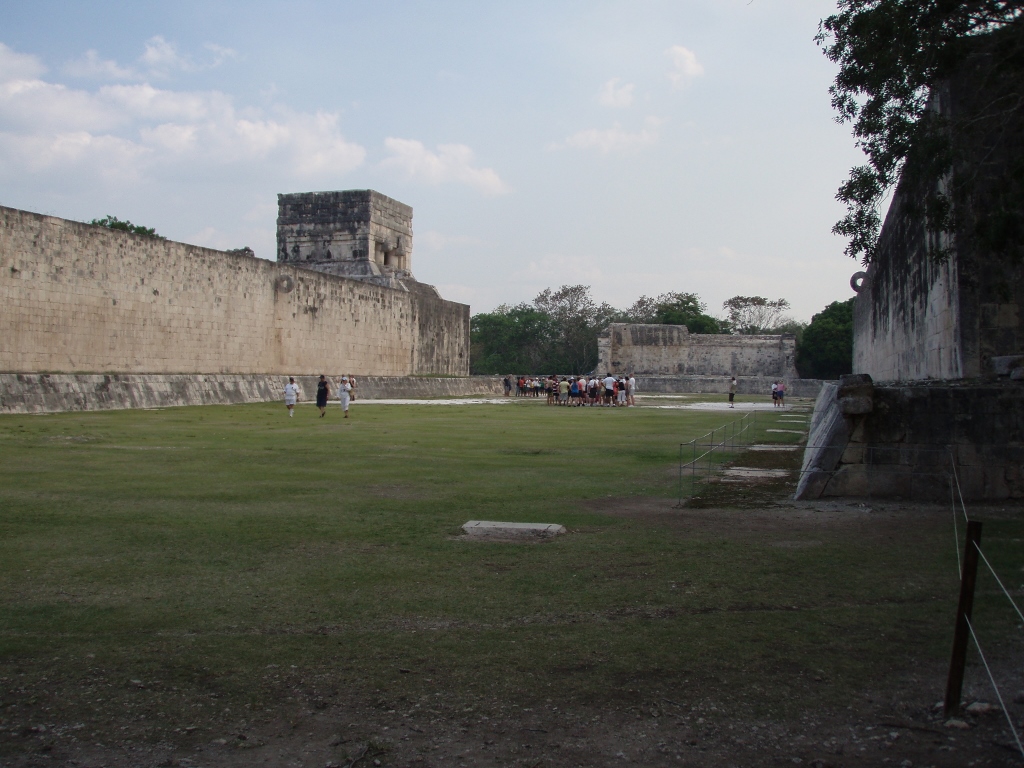 Ballcourt as seen from the northwest corner
Ballcourt as seen from the northwest corner
From this angle it was also possible to see nicely from the front the head of the feathered serpent Kukulkan that adorns the court along its length with its forked tongue.
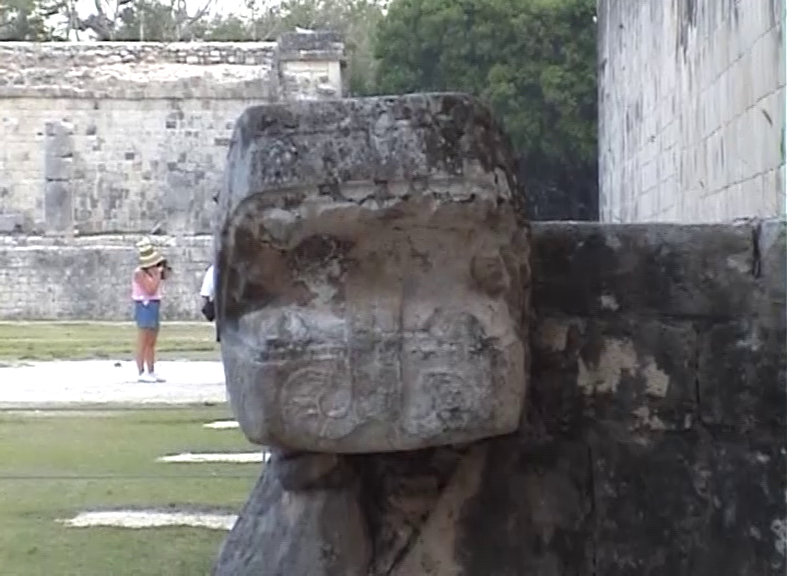 Head of Kukulkan with the forked tongue
Head of Kukulkan with the forked tongue
Although I was quite dedicated to the observing of the Ballcourt of the ancient Maya, I could not help noticing a beautiful touch of nature. In the greyness of the tree bark and the surrounding stones, a wonderful green plant with red details managed to find its living space here.
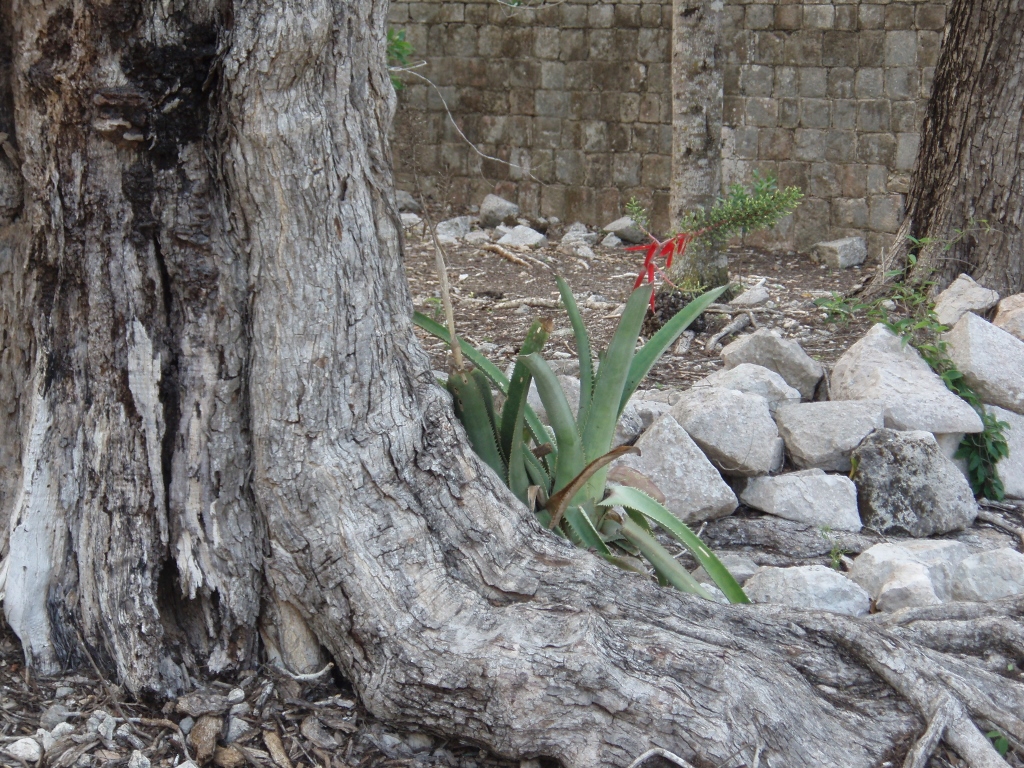 Natural decoration around the Ballcourt
Natural decoration around the Ballcourt
Still, let me go back to the Ballcourt. At the end of the court by which I was standing when making the previous photos, there is the Temple of the Bearded Man (Templo del Hombre Barbado). On the opposite, south end of the court there is yet another temple, even a bigger one, but it is all in ruins (as may be seen in one of the photos above). This one, on the north side, however, is in quite a good shape. Since the temple is positioned on an elevated platform, where no stairs to the platform were to be seen, I wondered how the Mayan priests and noblemen climbed up to the temple, but I was also aware that it would be the slightest of the problems for them to be carried on the shoulders or in a carrier that could be brought right close to the stairway leading from the platform to the temple.
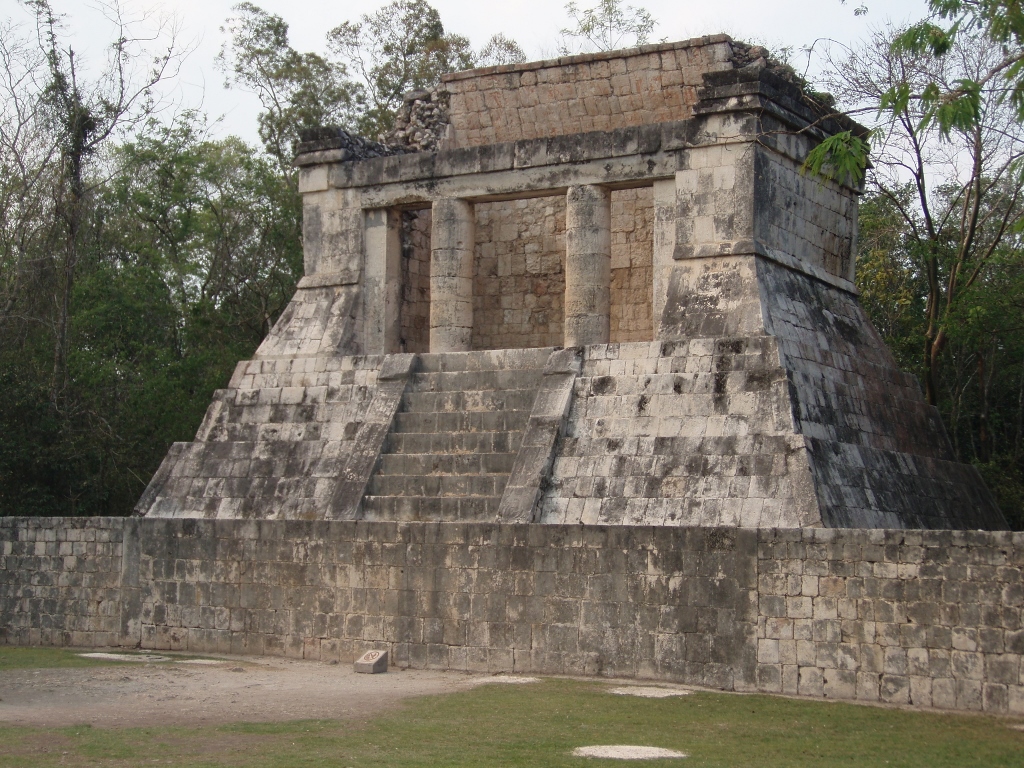 Temple of the Bearded Man
Temple of the Bearded Man
Although it appeared pale, from the ground it was possible to see that the interior of the temple was decorated. Somewhere there, there is a depiction of a man that has a carved ornament under his chin, which renders the name of this temple.
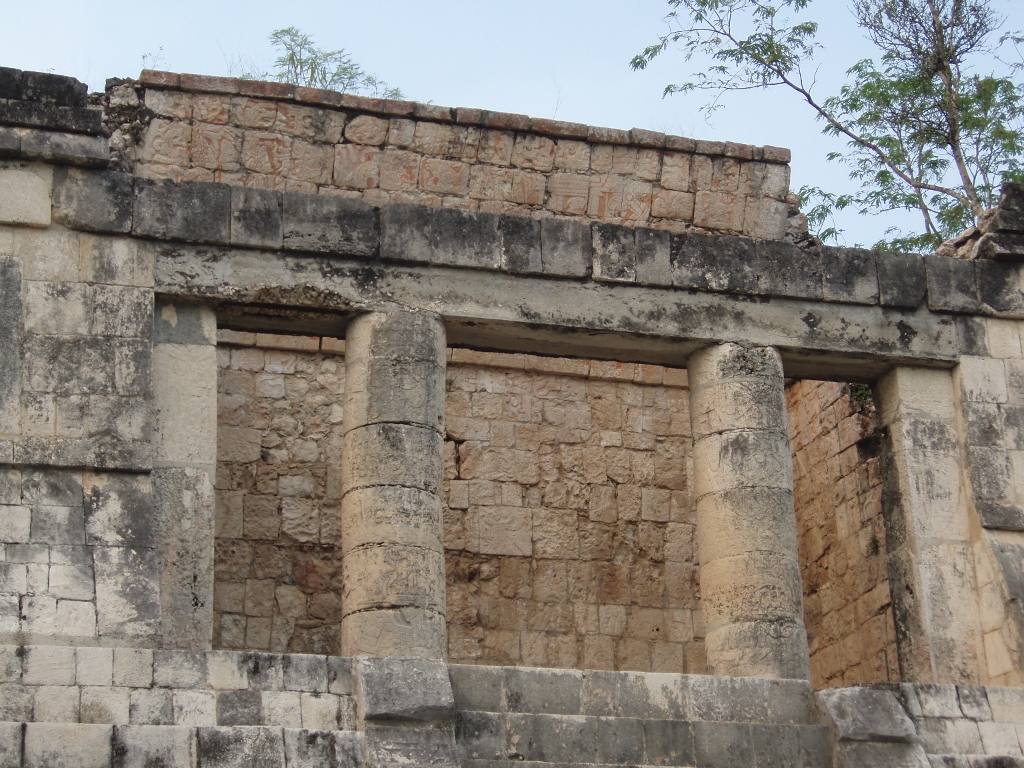 Temple of the Bearded Man, view from the ground at the interior of the temple
Temple of the Bearded Man, view from the ground at the interior of the temple
I continued walking beside the west side of the court, along the wall on which there is the round stone goal, just like on the other, east side, through which it was necessary to throw the ball. From up close I could see more details, for instance, that the stone ring is decorated with carved intertwined feathered serpents.
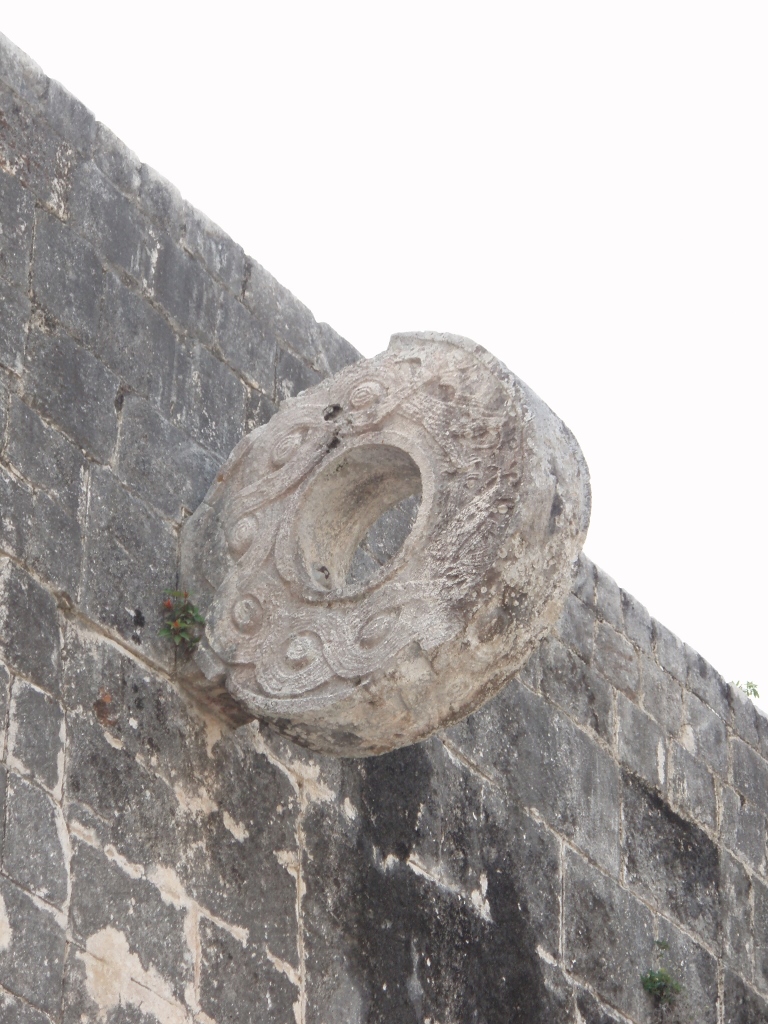 Stone ring on the Ballcourt
Stone ring on the Ballcourt
And so I came to the other end of the court from which it was possible to see nicely the whole court, as well as the position of the Temple of the Bearded Man. It was already around 4 pm and therefore there were fewer visitors.
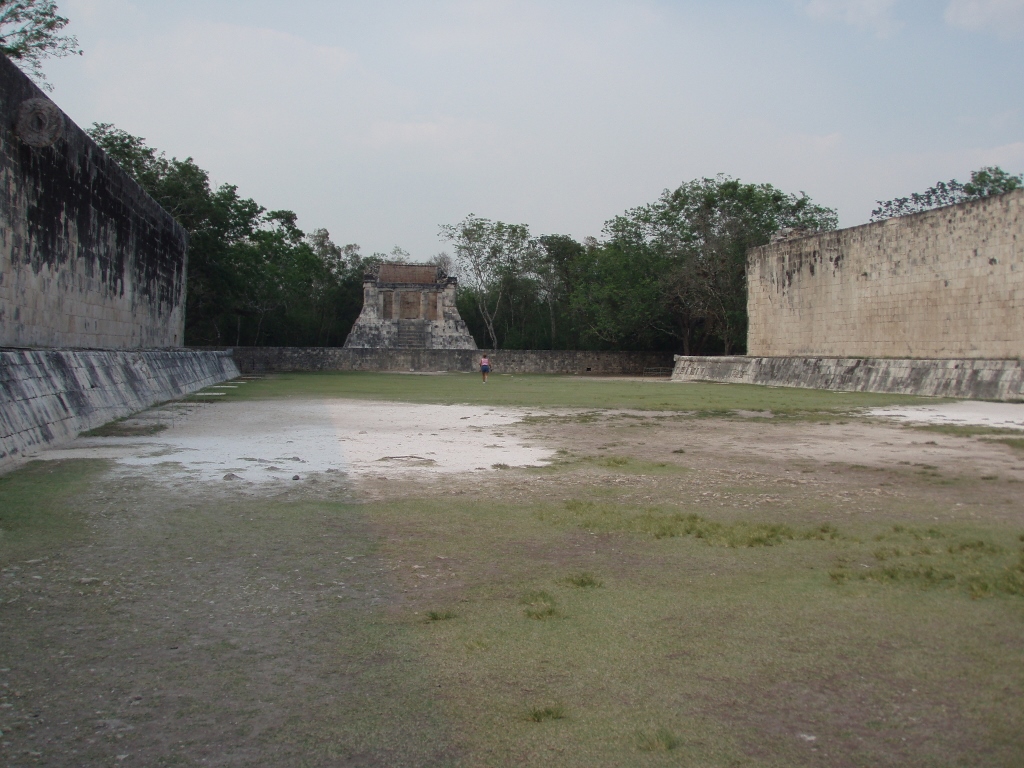 Ballcourt with the Temple of the Bearded Man in its north end
Ballcourt with the Temple of the Bearded Man in its north end
Still, I was not completely alone and therefore I could ask one woman to take a photo of me.
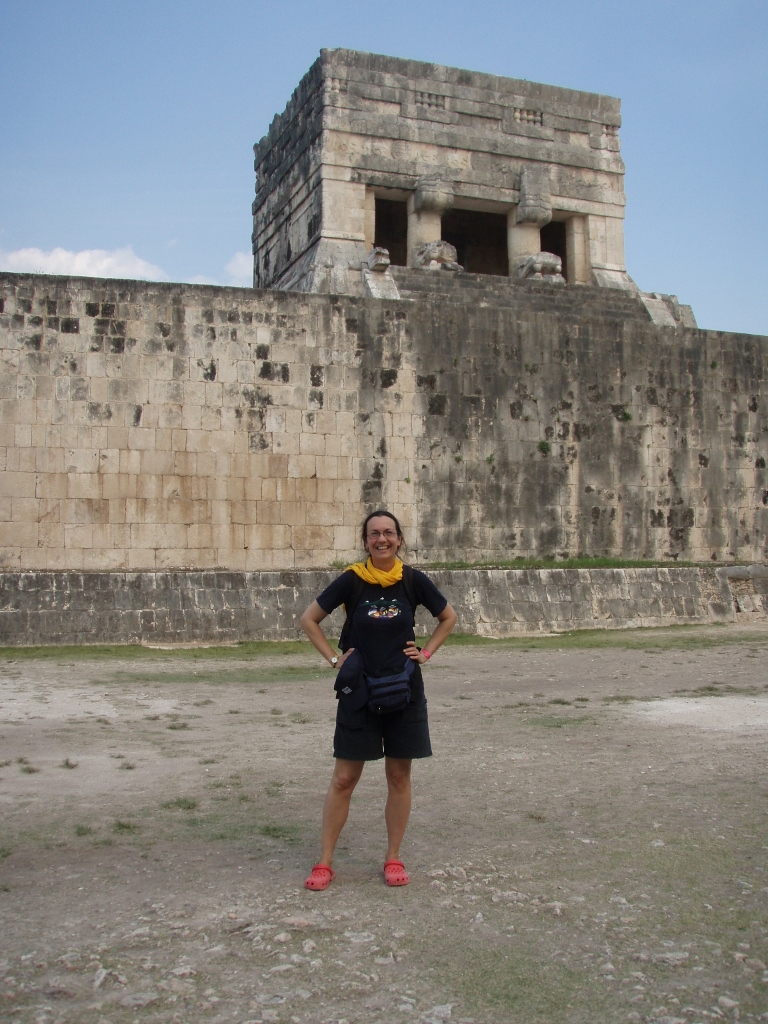 On the Ballcourt
On the Ballcourt
In the photo above, directly behind my back, it is possible to see the Upper Temple of the Jaguar, but I would first like to draw the attention to my shawl. I’ve already mentioned before that my neck got sunburned the day before when I walked around Cancun and on this day it was necessary to protect it. I thought the creams were not enough and so I bought the shawl. It may have seemed silly and I did feel additionally hot, but at least the skin of my neck was properly protected.
As for the Temples of the Jaguar, there are two of them – the upper and the lower ones. The upper one can also be seen in the following photo and it actually looks from above at the Ballcourt, while it is reached by the stairway that is built on the side.
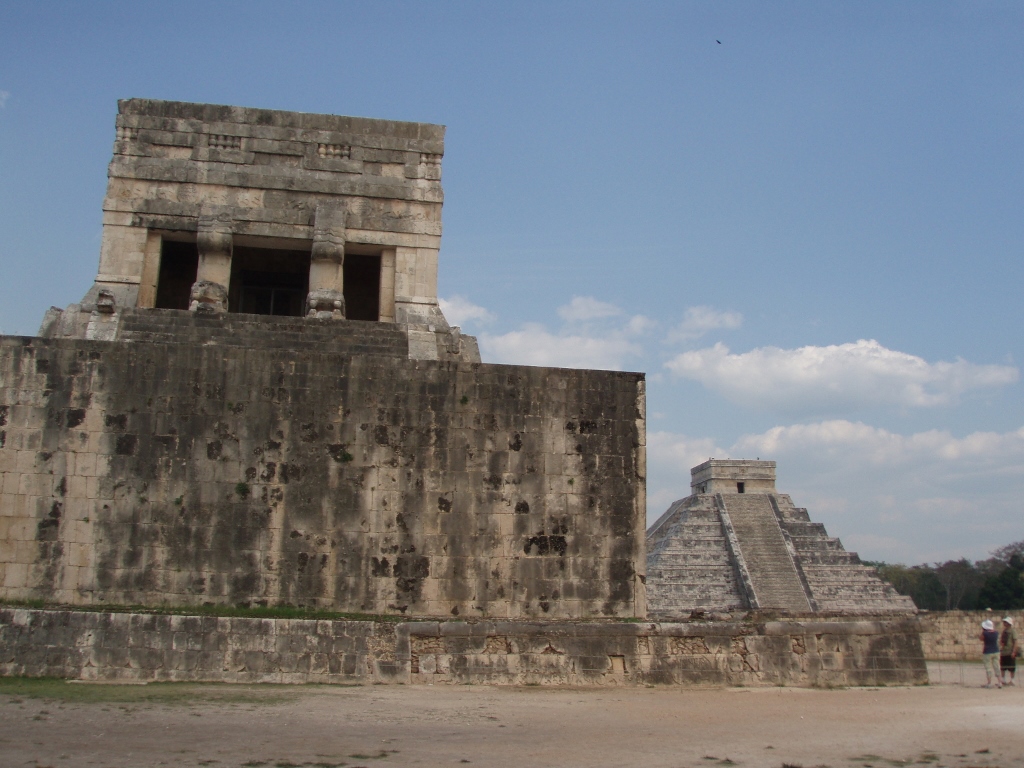 Upper Temple of the Jaguar and El Castillo in the background to the right
Upper Temple of the Jaguar and El Castillo in the background to the right
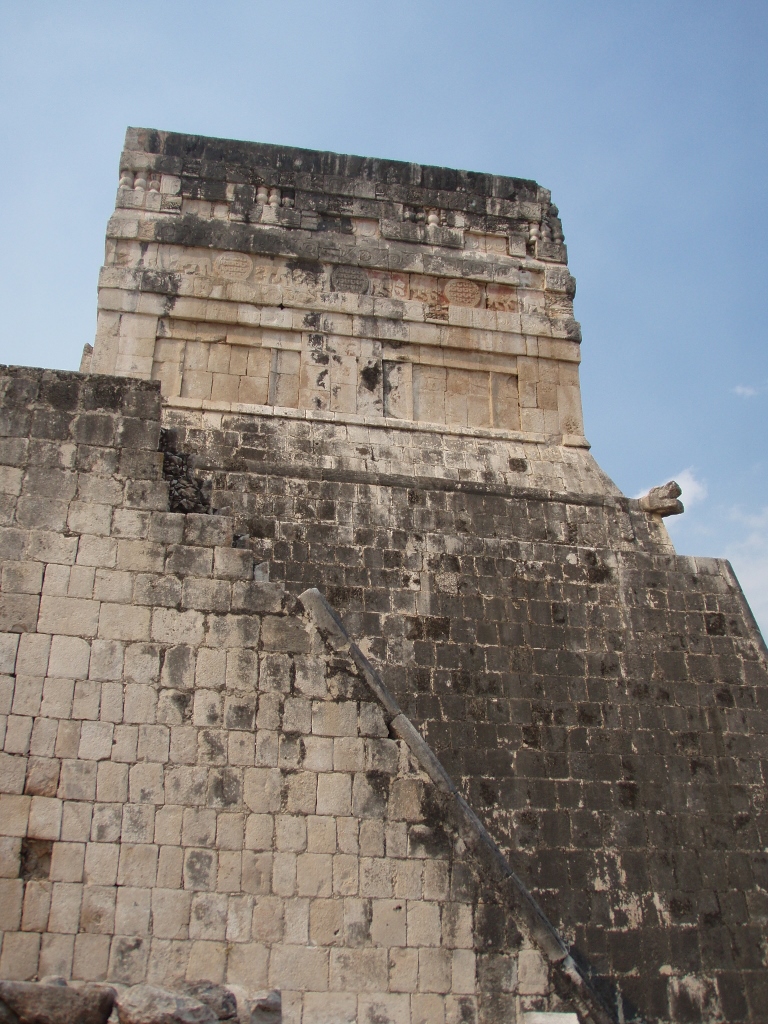 Side view at the Upper Temple of the Jaguar and the stairway that leads to the top
Side view at the Upper Temple of the Jaguar and the stairway that leads to the top
As for the Lower Temple of the Jaguar, its entrance is at the level of the ground and it faces the opposite side in relation to the upper temple, i.e., it faces the spacious square with El Castillo. Its entrance is decorated with the Jaguar Throne.
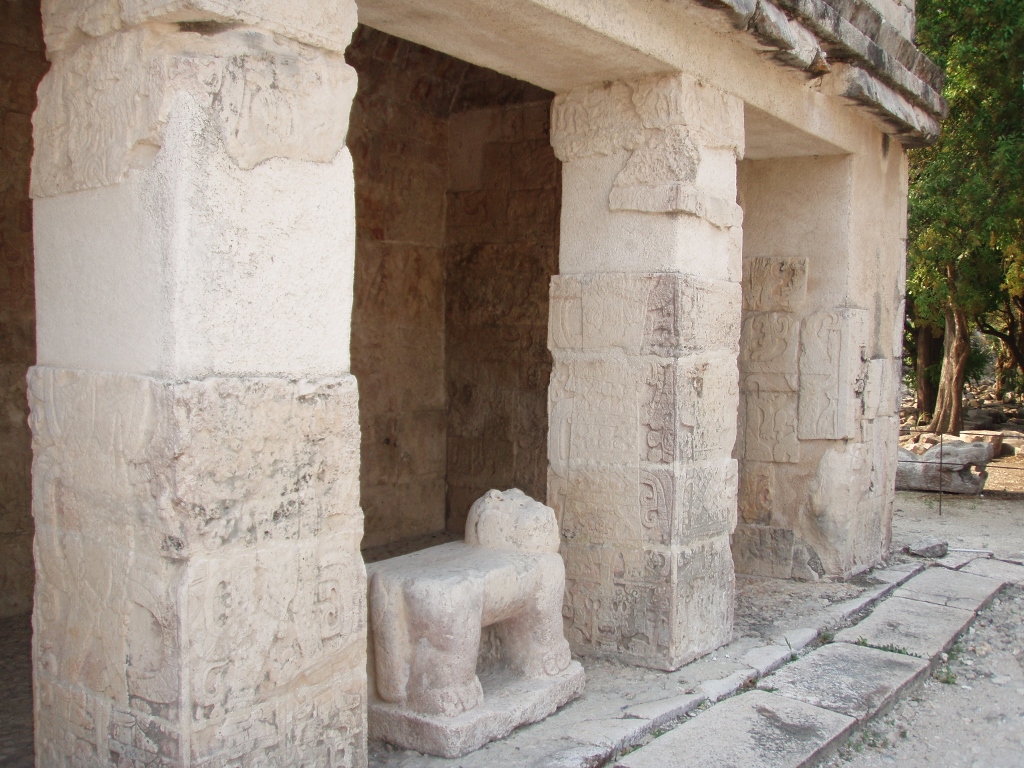 Entrance into the Lower Temple of the Jaguar and the Jaguar Throne
Entrance into the Lower Temple of the Jaguar and the Jaguar Throne
As it may be seen from the previous two photos, by this time I was already losing my concentration and paid less attention to the details linked to the Temples of the Jaguar. The reason was that here I was finishing with my visit to the Ballcourt and as for the most important structures at the site of Chichén Itzá there was only the main one left and that was the Castle, that is, El Castillo. It simply dominated the views I had from the Ballcourt and it imposed itself, thus drawing all of my attention. In addition, the site was soon to be closed and it was high time for me to dedicate myself more to El Castillo.
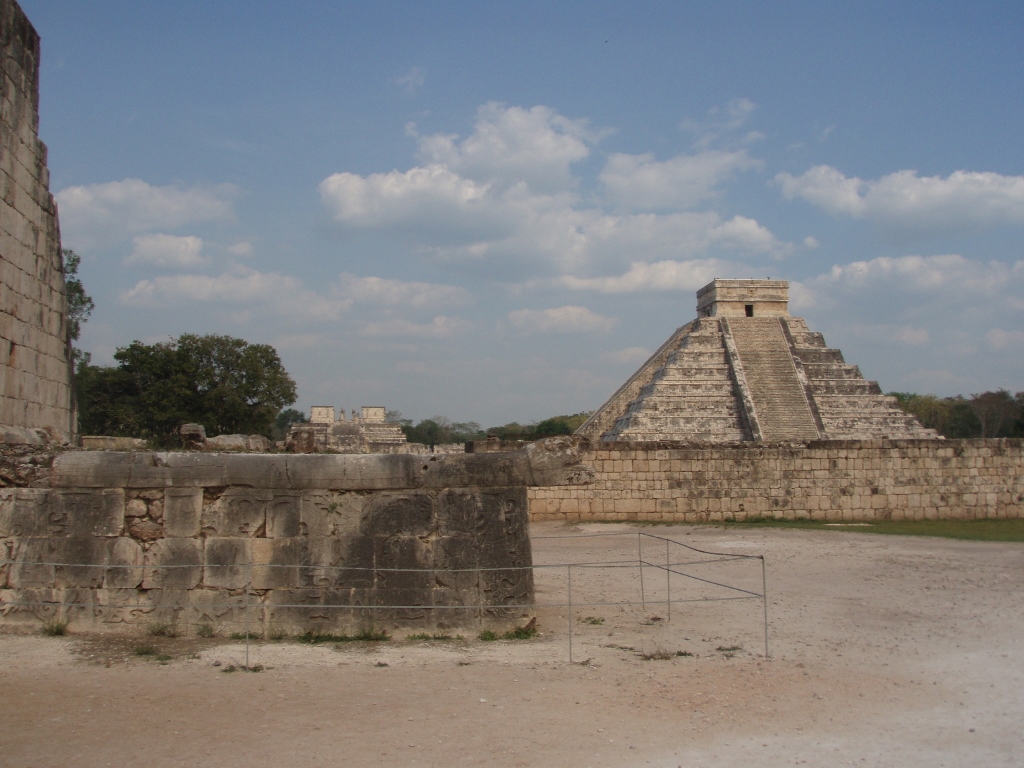 View towards El Castillo, with the Temple of the Warriors a little farther away
View towards El Castillo, with the Temple of the Warriors a little farther away
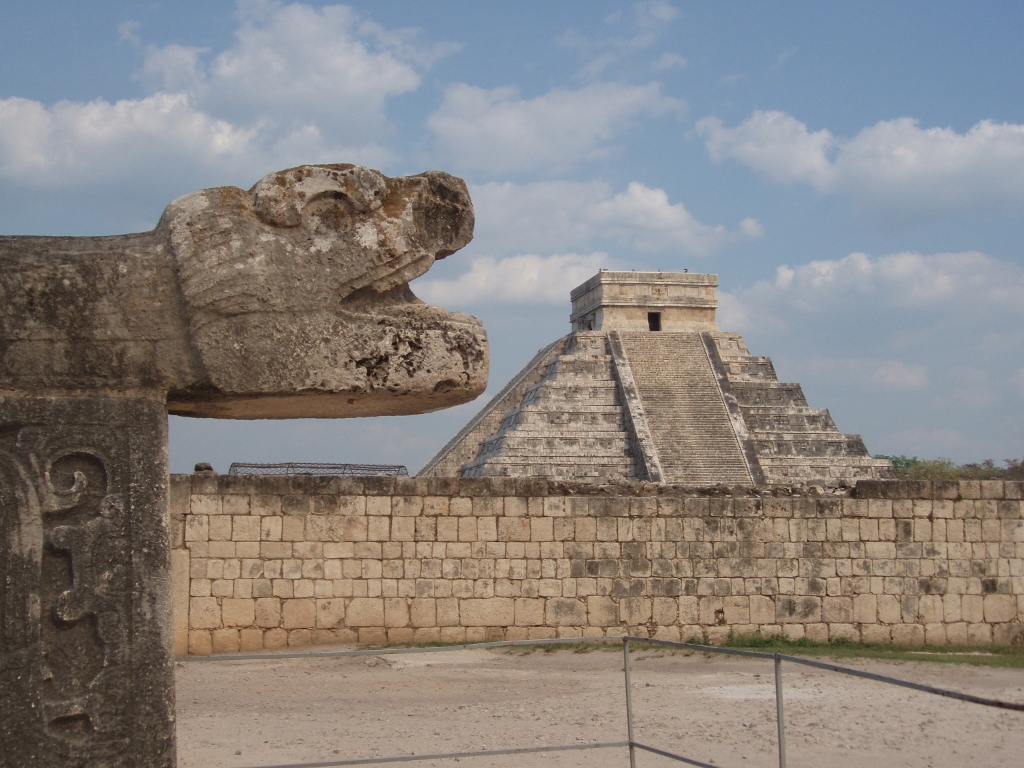 View at El Castillo with the head of Kukulkan that adorns one of the ends of the Ball Court
View at El Castillo with the head of Kukulkan that adorns one of the ends of the Ball Court